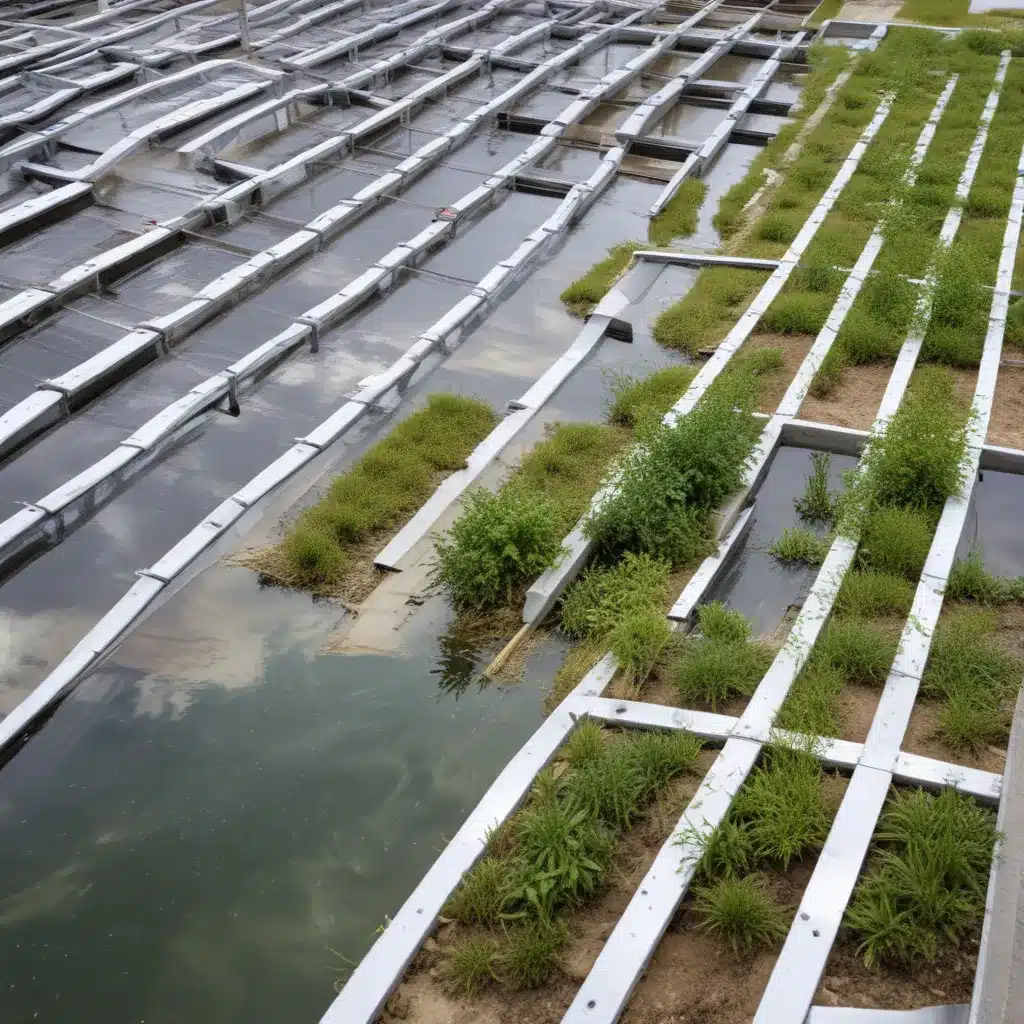
Unlocking the potential of roof-integrated stormwater management and water conservation strategies for sustainable water management
Harnessing the Power of Rooftops for a Resilient Future
As a seasoned roofing professional, I’ve witnessed firsthand the untapped potential of our urban rooftops to transform the way we manage water resources. In an era of escalating climate challenges, rethinking our approach to stormwater and water conservation has become a critical imperative.
Quantifying the Rooftop Opportunity
Recent research estimates that there are approximately 245 billion square meters of rooftop space worldwide – an area equivalent to the land mass of the United Kingdom. Remarkably, 29% to 50% of these rooftops are suitable for various types of roof-integrated engineering approaches, unlocking immense possibilities for sustainable water management.
Cooling Cities, Saving Energy, Reducing Runoff
By effectively utilizing our rooftop resources, we can achieve remarkable results in key areas of urban sustainability. Studies show that the strategic deployment of green roofs, white roofs, solar roofs, blue roofs, and wind turbine roofs can:
- Cool cities: Reduce urban temperatures by up to 0.6°C, mitigating the urban heat island effect.
- Save energy: Meet up to 44% of a city’s total energy demand through rooftop solar and other renewable energy solutions.
- Manage stormwater: Reduce runoff by approximately 17%, alleviating pressure on aging urban drainage systems.
- Conserve water: Save up to 23% of a building’s water demand through roof-based water harvesting and reuse systems.
The efficiency of these roof-integrated strategies is heavily influenced by local climate conditions and building types. Mediterranean climates and low-rise buildings tend to provide the most favorable conditions for maximizing the benefits.
Adapting to a Changing Climate
As climate change intensifies, the need to rethink our approach to stormwater and water management has become increasingly urgent. Communities across the United States are grappling with the escalating challenges of water scarcity, flooding, and water pollution, all of which are exacerbated by outdated infrastructure and unsustainable development patterns.
Stormwater Challenges and Opportunities
Traditionally, urban stormwater management has focused on quickly evacuating runoff from cities, discharging it into nearby waterways. However, this approach has led to the degradation of water quality, the disruption of natural hydrological cycles, and increased vulnerability to flooding. With the rise in the frequency and intensity of extreme precipitation events, our aging municipal stormwater systems are increasingly ill-equipped to handle the growing volumes of runoff.
Embracing Rainwater as a Valuable Resource
By reframing our perspective and embracing rainwater as a valuable resource rather than a nuisance, we can unlock a wealth of opportunities for sustainable water management. Roof-integrated strategies, such as rainwater harvesting, green roofs, and blue roofs, offer innovative solutions to manage stormwater, reduce water demand, and enhance urban resilience.
Roof-Integrated Stormwater Management Solutions
Rainwater Harvesting: Capturing and storing rainwater that falls on rooftops for non-potable uses, such as landscape irrigation, toilet flushing, and industrial processes, can significantly reduce the strain on municipal water supplies and mitigate the impact of stormwater runoff.
Green Roofs: Vegetated rooftops not only provide thermal insulation and reduce building energy costs but also act as natural sponges, absorbing and slowing the release of stormwater, thereby reducing peak flows and improving water quality.
Blue Roofs: Designed to temporarily store and slowly release rainwater, blue roofs can help alleviate urban flooding by reducing the volume and peak flow of stormwater runoff. These systems also offer the potential for on-site water reuse.
Integrated Roof Systems: Combining multiple roof-integrated technologies, such as solar panels, green roofs, and rainwater harvesting, can create synergistic benefits, maximizing the potential for water conservation, energy savings, and stormwater management.
Unlocking the Potential: A Collective Effort
Realizing the full potential of roof-integrated water management strategies requires a collective effort involving policymakers, urban planners, building developers, and roofing professionals. By working together, we can overcome the institutional and regulatory barriers that have historically hindered the widespread adoption of these innovative solutions.
Policy and Regulatory Frameworks
Supportive policy and regulatory frameworks are crucial for incentivizing and enabling the implementation of roof-integrated water management strategies. Successful examples from around the world demonstrate the importance of measures such as mandatory green roof installation requirements, water reuse regulations, and financial incentives for adopting these technologies.
The Role of Roofing Professionals
As roofing professionals, we play a pivotal role in bridging the gap between design and implementation. By staying informed on the latest roof-integrated technologies, best practices, and safety protocols, we can guide building owners and developers in making informed decisions that align with their sustainability goals and local water management priorities.
Integrating Roof-Based Strategies into Urban Planning
Incorporating roof-integrated water management strategies into the broader urban planning process is essential for achieving holistic and resilient water management solutions. By collaborating with urban planners, we can ensure that roof-based interventions are seamlessly integrated with other green infrastructure, energy efficiency, and climate adaptation measures, creating a comprehensive framework for sustainable development.
The Future of Roof-Integrated Water Management
As we look to the future, the potential of roof-integrated water management strategies to transform our urban landscapes and enhance community resilience is truly inspiring. By harnessing the power of our rooftops, we can unlock a more sustainable, water-secure, and climate-resilient future for our cities and towns.
To explore the Roofing in Northampton services and learn more about how our team can help you implement roof-integrated water management solutions, please visit our website or contact us today. Together, we can unlock the potential of our rooftops and build a more sustainable tomorrow.

